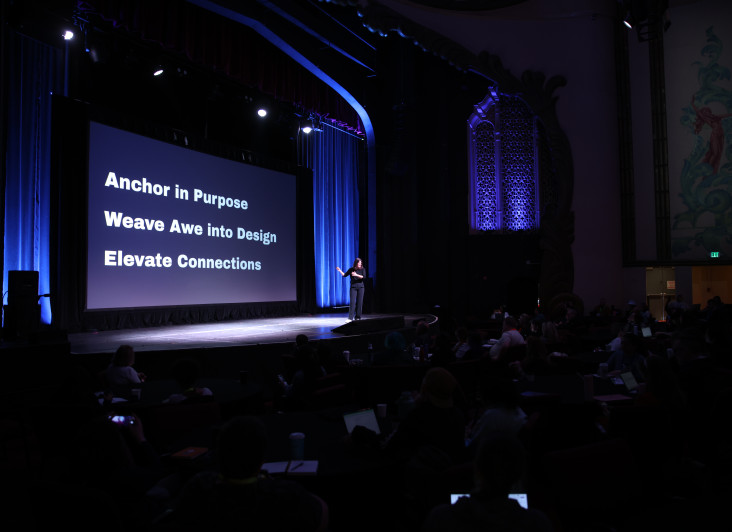Five online community mistakes and how to overcome them

An online community is a space that allows like-minded people to communicate and engage with one another around a particular subject. However, building and maintaining a successful community can be challenging for community managers and leaders.
Here are our five tips for overcoming these challenges:
Be patient!
We’ve all heard the saying, Good things come to those who wait, and yet, one of the most common mistakes in community building is expecting quick results.
Nurtured relationships
The most successful communities have great communication and strong relationships, both of which are developed over time. These nurtured relationships are not only vital for member satisfaction but also to encourage organic growth.
In fact, many community leaders depend on the positive actions of members to promote and grow their online communities. The 2023 Digital Community Leaders Survey Report found two of the three most common avenues for community growth are member-reliant:
Word of mouth (66%)
Organic search and social media channels (60%)
Member referrals (56.9%)
These statistics show us the value of being patient and why you should never skip on investing time in your member relationships. Without them, your community would fail to attract and retain members.
Realistic expectations vs rash decisions
Every community manager wants to present positive data to shareholders and community leaders as quickly as possible, but it’s important to set realistic expectations.
Spend time thinking about how you plan to improve or grow your community, making sure each decision comes back to your community’s mission and manifesto.
Impulsive decisions or ‘quick wins’ will likely not align with your community’s goals and could hurt your community in the long run.
Long-term strategies and planning also let your community grow at a speed you can handle. Growing too fast without the right resources in place will ultimately work against you and the success of your community.
Additionally, you want to be cautious of growing for growth’s sake. It’s a misconception that the larger the community, the more successful it is. Some of the most successful communities are smaller, niche groups because the members perfectly suit the community.
Remember, the number of members in your community is considered a vanity metric and doesn’t truly show the value of what your community is bringing to its members.

Treat members like individuals, not consumers
It’s important that your community is a safe space for your members, especially new ones to ensure they feel comfortable.
People will join an online community for a number of reasons, such as:
To learn more (39%)
Ideas and inspiration (31%)
Meet/interact with like-minded people (29%)
Sense of belonging (23%)
Support system (21%)
If you bombard new members with marketing messages or try to sell them products or services immediately, expect them to disengage!
Ensure community moderation
Sales or spammy talk can also come from your members.
Having clear moderation guidelines can help direct the type of conversations in your online community and will gently nudge people away from sharing content that doesn’t meet your code of conduct. You can also reward member moderation to keep control of this.
Remember, people are dealing with sales pitches in every aspect of their life, whether it’s face-to-face, emails, advertising boards on the train, or cold calls. Your online community should be somewhere they look forward to engaging.
If you start to notice the conversations inside your community are fairly one-sided, then it may be worth revisiting your moderation policies.
Prioritise operational support and internal resources
A community cannot run without solid operations. From a community team to a well-suited platform, there are certain aspects of your community’s success that rely on more than member engagement.
Convenience or relevance?
When you’re starting out your community, it’s vital that you spend time deciding on your platform and CRM system.
For example, choosing a community platform based on the easiest set-up doesn’t mean it’s going to perform how you want or that it’s the best option for your target audience.
Always do your research and see what suits your audience and your community’s needs.
Leadership involvement
If your leadership team isn't invested in the community, it can make it difficult to get the resources you need to be successful.
This proves to be an issue for many online communities, with nearly 34% of communities struggling with leadership and internal collaboration, and 16.9% of C-Suites not getting involved in their community at any level.
It comes back to showing the value of your online community, and especially how its value helps your company or brand.
Breaking down community silos and creating a connected strategy that works for the company lets you show the benefits of the online community and encourage involvement at a higher level.
When leadership gets involved, it shows that they take the community seriously which, in turn, can help build trust amongst members.

Engagement is everything
This might seem like a no-brainer, but you need continuous engagement for your community to work. Your engagement rate can either be what keeps your community thriving or the cause of your community failing.
Use the participation ladder
We always encourage community managers who are struggling with engagement to look at the participation ladder. The participation ladder allows you to segment your community members and match engagement levels with incentives.
Every member is different and it’s important to acknowledge that within your online community.
Having engagement strategies in place will help keep the conversation going (quite literally!). The more proactive you can be with engagement, the better chance your community has.
Review your onboarding process
It might be that you’re doing everything you can to encourage engagement, and yet your community data isn’t reflecting that. If that’s the case, we always suggest going back to your onboarding process.
What’s included in your onboarding process could be the key to why your engagement strategies aren’t working.
For example, your very first onboarding steps might be encouraging the wrong type of people to join. If someone isn’t your ideal member but joins your community anyway, your tailored engagement strategies will be less effective and, as a result, they’ll be less likely to participate.
It could also be off-putting for the people who do fit your ideal member profile as these other members are not quite as like-minded as they were hoping for.
Another possibility is you’re not catching new members early enough with a strong welcome. Community welcomes play a huge role in engagement. If someone feels welcomed, they’ll instantly feel a strong sense of belonging and want to engage.
Listen and adapt
You can improve your onboarding processes and your engagement strategies, but if you’re not willing to listen and take action on what your members want, then your community will likely have a short shelf life.
Make the most of your data to find out what you’re doing well and where you could improve.
By making adjustments based on feedback and data, your community members will feel appreciated and valued. If they feel their suggestions have been heard, they’ll continue to show up for you time and again.
Help your online community succeed
At Steadfast Collective, everything we do is to help companies create a space where community members want to gather and engage. If you want to start or improve your online community, let’s have a chat!
More Articles

Can you track it?
Every budget is being put under the microscope right now, and quite right too.

When to Build Your Own Membership Platform (and When Not To)
I’ll let you in on a secret, not every membership organisation needs a bespoke membership platform.

Design for AWE
Anchor. Wonder. Connection. The blueprint for unforgettable memberships.

